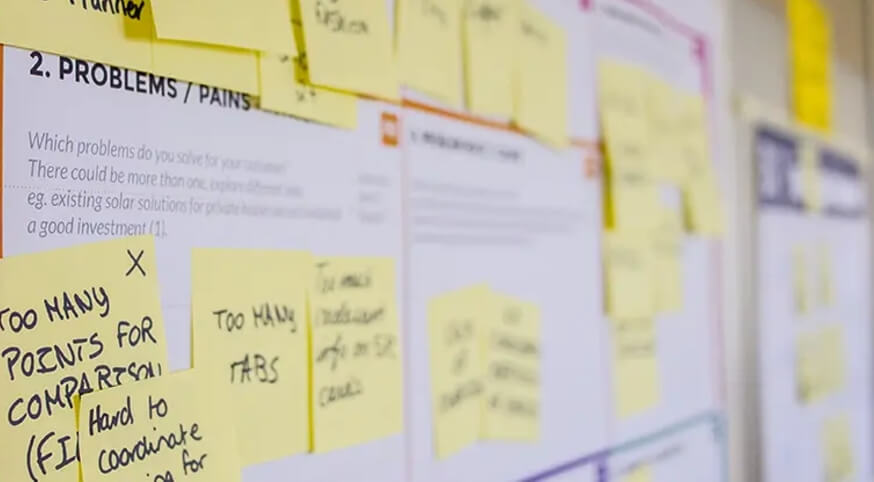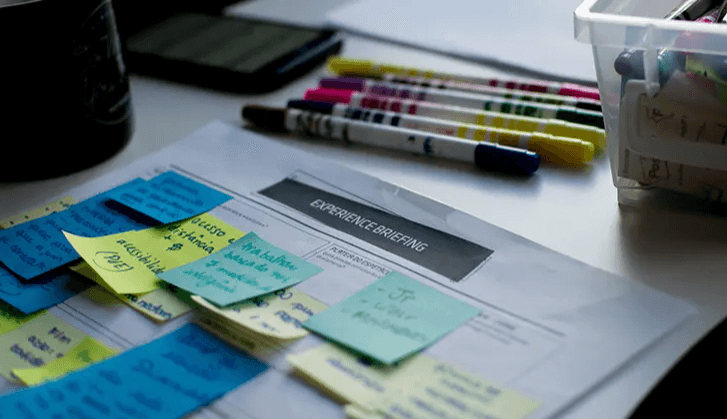In today's competitive market, creating a successful product takes more than just following guidelines. It requires innovation, clear goals, and strong leadership. This article explores common mistakes product managers make, from weak execution to lack of creativity, and how these flaws impact product success.
In a highly competitive market, the role of a product manager is crucial. They not only need clear product goals but also a strong desire to win and an innovative mindset. However, not all product managers succeed in creating a satisfying product. Despite sharing the same office and wearing the same “Product Manager” badge, why does the same product yield drastically different results when handed to different product managers?

So, I started wondering: what exactly causes the differences between product managers? What problems do “weak” product managers tend to have?
Over time, I’ve come to understand a few key reasons:
Problem 1: Lack of Clear Goals and Low Desire to Win
Even though they have the title of “manager,” most product managers are still lone wolves. They also have a lot of discretion over specific tasks and often need to rely on their own drive to find work to do.
The boss usually points you in a general direction, but it’s up to you to figure out the rest: setting goals, breaking down tasks, and executing.
However, some product managers are mere "tool operators" or "prototype guys"—they just do what they’re told without ever thinking critically. Without goal-driven motivation, they approach tasks with a "just-get-it-done" attitude.
Even if they have a promising product opportunity, if they lack a strong desire to win, they’ll lose momentum due to hesitation, doubt, and procrastination. When competitors enter the scene, they quickly surrender.
Without the determination to win, they approach work like a dragonfly skimming water—touching the surface but never going deep. They can’t be persistent, and the pieced-together product ends up lacking competitiveness.
For example, I once managed a quick diagnostic equipment product, which, as a software product manager, not only crossed product types but also spanned a different field (chemical testing). After tireless effort, I found a partner manufacturer and launched an OEM product, which sold quite well.
Once, I asked another product manager: “If the boss had assigned this product opportunity to you, what would you have done?”
He confidently replied: “I would have taken it, spent one or two weeks doing research, and then presented the boss with a report explaining why it wouldn’t work and that the product opportunity was unviable.”
Later, the boss realized that after assigning over ten new product directions to this product manager in a year, not a single new product was successfully launched.
Not long after, with a string of “negative reviews” from all the senior leaders, he chose to leave the company.
The weaknesses of a product manager's character manifest in their products. How can a product with no ambition survive in the cutthroat market?
Problem 2: Blind Copying and Lack of Innovation
Creating a product isn’t that complicated. Most product managers are just “getting by.”
When assigned a new product by the boss, without knowing where to start, you'd think the proper process would involve customer research, needs analysis, feature planning, process design, and interaction design. But in reality, they just find a few competing products, copy bits from here and there, and voilà! A “knockoff” product is born!
And indeed, this is often the case. Many fresh graduates who land product assistant roles only need to stick around for a year and learn to make prototypes to be promoted to product managers.
The real veterans in product development, however, have been around the block—they wouldn’t dare show their face without a product they’ve built from scratch.
But those who just make prototypes lack innovative thinking and merely copy what others have done.
After all, in terms of time and energy, this is the least effort and lowest-risk option. You can defend yourself internally, saying that this is how others do it, and you can convince yourself there’s no need to take risks. If the new feature doesn’t work out, you’d have to bear the blame.
But let's be real—some products can follow in others’ footsteps and still succeed; however, others may fail miserably even after copying the exterior.
Why?
Because you can’t extract the key selling points, train the sales team on customer pain points, or craft a compelling story for the product. Without that, it’s hard to promote the product.
Simple imitation of competing products often leads to a situation where post-launch costs outweigh the benefits, and the blame ends up being placed on an "incompetent sales team."
Even if you tweak existing products a bit—make some “micro-innovations” and introduce a bit of differentiation—you might still be able to attract some customers.
But if you get into the habit of copying and imitating, you’ll shut down your brain's thinking abilities. You won’t even bother with simple micro-innovations and won’t dare to try anything new. Gradually, you’ll devolve into just a “prototype guy.”
Problem 3: Weak Execution and Lack of Leadership
Nowadays, many products are “rushing to market.” It’s like a race—whoever gets out first has a chance to reap the market rewards. If you’re just trailing behind others and copying, you’ll be lucky to get even a taste of the benefits.
Thus, the market opportunity is laid out, and once it's gone, it’s gone—there won't be new growth.
This puts a demand on product managers: speed.
Sometimes, before the product is fully conceived, sales teams are already out there introducing it to customers, fearing that other manufacturers might “steal” the client.
Especially in government procurement projects, planning and budget applications need to be done six months to a year in advance. Theoretically, whoever’s proposal is accepted will end up selling the product, leaving other competitors with nothing but “sorry” to say.
The word “fast” seems simple, yet many product managers struggle to pick up the pace, feeling as if they’ve been hit by a slow-motion button, which can be quite frustrating!
When you ask them, they’ll have a long list of reasons why they can’t be “fast”:
They haven't managed to schedule customer interviews with sales yet.
Even when they’ve arranged for discussions, customers are unavailable during this period.
They lack policy documents and need time to gather them.
There are too many product features, and the prototype isn't ready yet.
The R&D department lacks resources and needs to wait for scheduling.
They have other matters to attend to, and product documentation can't be completed in time.
…
Getting frustrated won’t help because, in their minds, their logic is “self-consistent.”
They don’t realize that the product needs to be pushed out quickly to capture market share; they merely see it as a job. When asked to work overtime, they comply but think that speeding up a bit is enough to satisfy their obligations.
Once they complete the product requirements, they consider their job done. What should follow is the pressure to push the R&D team to work overtime and get the product launched as soon as possible.
But when you ask them about this, they’ll immediately respond with a look of grievance: “I can’t make R&D work overtime; I don’t have that authority, and they don’t listen to me. If I were their boss, I could drive them to do it.”
Frankly, under this kind of mentality, it’s a wonder if they ever reach a leadership position!
Why can’t they get R&D to work overtime?
Ultimately, it comes down to their own inadequacies. They lack project management experience and are deficient in leadership. The R&D team simply doesn’t take them seriously!
Why do they disregard them?
While the R&D team is working overtime, this product manager is clocking out on time. When project deadlines become tight, they know to pressure others into working overtime while remaining relaxed themselves. The requirement documents are written with a casual attitude, filled with holes, which greatly reduces the efficiency of the R&D and testing teams. Many planned functions are unreasonable, and they can’t provide logical explanations; they’re merely ideas conjured up in their own mind that end up being useless. They have no technical knowledge and, when issues arise, can’t engage in effective communication or discussion. Project requirements change frequently, with no prior considerations made, resulting in an increased workload for everyone afterward. Isn’t that just tormenting people? Looking back at past projects, the products they managed hardly ever achieved any sales success. Not only was the work hard, but their year-end bonuses were also lower than others’. Who would want to work with them?
So, it’s not just a lack of management authority but rather a lack of credibility in their overall abilities, making it difficult for them to inspire enthusiasm among their colleagues.
This is why, when everyone’s product requirements are flawed, R&D tends to favor the product manager whose products don’t generate overtime yet lack any sales performance.
Problem 4: Busy with Meaningless Tasks, Unable to Distinguish Priorities
Many product managers define their roles as “doing miscellaneous tasks.” They feel the need to tackle everything that no one else wants to do, as long as it’s somewhat related to the product.
When the project launch date is looming, and testing resources are scarce, they think, “Fine, I’ll just do the testing myself!”
If sales teams don’t know how to present the product? No problem, they’ll quickly buy a ticket to visit clients!
The product needs to be sold? Then they’d better draft a sales contract ASAP!
How to handle product delivery? They have to meet with procurement and warehouse management, writing everything down word for word.
What if product installation has issues? The after-sales team hands out their phone number to the client, and when the client calls, they’ll be busy again!
Tasks sometimes pile up one after another, and by the end of the day, they’ve handled seven or eight issues, with not a single product design task accomplished.
They’re overwhelmed, and when they clock out, everyone from other departments is leaving on time, with no one coming to ask for their help. As a result, the prototype design work remains unfinished, and the R&D team is waiting for their requirements. Reluctantly, they end up working late into the night.
But after a day’s worth of exertion, their energy is nearly spent. Trying to focus on product design is futile; their mind has already shut down. Thus, they can only hastily produce something that resembles a functional feature, ensuring the R&D team at least has something to work on.
What’s the final outcome?
The product ends up poorly developed, and they’re left utterly exhausted.
To escape this situation, they might change companies and start anew, slowly waiting for new tasks to “find” them. When they can’t bear it any longer, they’ll switch to another company.
To create a good product requires a substantial investment of time and energy, yet they only allocate 20% of their time. How can any product turn out well under such circumstances?
Why is this happening?
The root cause lies in their inability to differentiate between what’s important and what’s not, mistakenly spending 100% of their time and energy on the 80% of tasks that are trivial. They’ve become the “nice person” in everyone’s eyes, yet in the boss's mind, they are seen as a “deadweight.”
Final Thoughts
Why can’t you create a good product?
Your product goals aren’t clear, and you lack a strong desire to win.
You’ve become accustomed to substituting imitation for innovation and mimicry for thinking.
You always find excuses for your shortcomings and gradually lose your support base.
You’re busy, tired, and working hard every day, but your efforts are misdirected.







